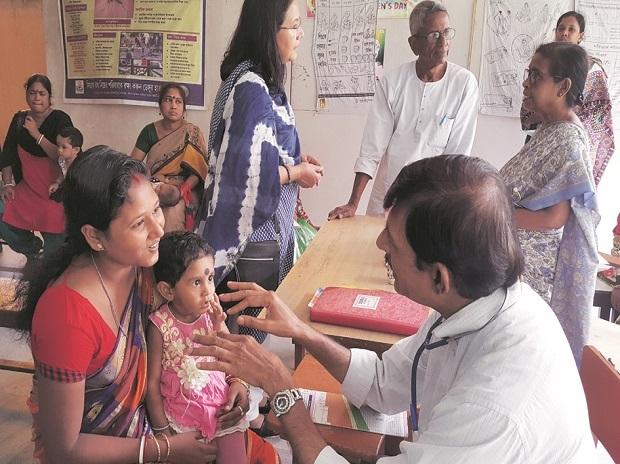[ad_1]
The Budget last year allotted Rs 86,200.65 crore for spending on “health”, an umbrella government term that includes expenditure on ‘Medical and Public Health’, ‘Family Welfare’ and ‘Water Supply and Sanitation’.
Finance Minister Nirmala Sitharaman’s Budget last year announced a National Digital Health Ecosystem for facilitating digital registries of health providers and facilities, unique health identity, consent framework and universal access to health facilities. It launched the National Tele-Mental Health Programme that includes a network of 23 centres of excellence.
India’s public healthcare spending stands far below its stated target of 2.5 per cent of the gross domestic product (GDP). Economic Survey 2021-22 noted an increase in health expenditure to 2.1 per cent of GDP in 2021-22 compared to 1.8 per cent in 2020-21
“The importance of preserving one’s health and wellbeing has been highlighted by the pandemic, and the wellness industry is in the throes of change. While the Union budget’s allotment for the healthcare industry climbed by 137 per cent in 2021 compared to the previous year, more investment should go toward the field of preventative health and wellness,” said K R Raghunath, a spokesperson from Jindal Naturecure Institute.
Funding for mental healthcare should be increased to at least 10 per cent of India’s health budget, he said.
Deepak Sharma, co-founder and chief executive officer at MedLern, said the last budget strengthened healthcare infrastructure at a time when the pandemic had exposed an acute shortage of trained healthcare workforce in the country.
“As such, we hope that the government in the upcoming budget suitably incentivises online and specialist medical learning and training providers by way of a range of financial and tax subsidies. This would help the latter to bring in the most advanced and sophisticated training programmes for not only doctors and nursing staff in the country but also paramedics and others who are usually present on the ground in emergencies and critical care situations.” Sharma said.
Dr Aakaar Kapoor, medical advisor and chief radiologist at City Xray & Scan Clinic, said the diagnostics industry has expectations from the Budget.
“There is a need for greater standardisation of diagnostic tests across the country. In a competitive healthcare market, accreditation like NABH and NABL not only raises the standard of diagnostics but also gives confidence to the patient or customer.
We expect that encouraging accreditation of labs is extended to Tier 2 and Tier 3 cities as well to provide equitable access to quality healthcare. We do feel that in the future, healthcare both public or private should provide equitable quality healthcare for all,” said Kapoor.
Budget 2022-23 sanctioned Rs 10,234 crore for the Pradhan Matri Poshan Shakti Nirman (PM POSHAN) programme. PM POSHAN, earlier known as the ‘National Program of Midday Meal in Schools,’ provides hot-cooked meals to school children between the ages of 6 and 14 years.
Last year, the Budget allocation for umbrella Integrated Child Development Schemes— Saksham Anganwadi and Poshan 2.0 schemes provide supplementary nutrition to children below six years of age was at Rs 20,263 crore making it 0.5 per cent of total Budget.
There was a marginal increase in the allocation made to Pradhan Mantri Matri Vandana Yojana from 0.05 per cent of the total budget in 2021-22 to it 0.07 per cent of the total budget in 2022-23. The scheme ensures good food for pregnant and lactating women.
Dipa Sinha, an assistant Professor with Ambedkar University who has worked on food rights, nutrition and public health, said the Budget has remained stagnant in terms of allocation in real terms for welfare schemes for women and children for their health and nutrition.
“Due to this stagnation, there is also a fall in coverage of these schemes,” she explains.
“So, one would hope that the budget for schemes like Anganwadi, Pradhan Mantri Matri Vandana Yojana, PM Poshan further increases.
[ad_2]
Source link



